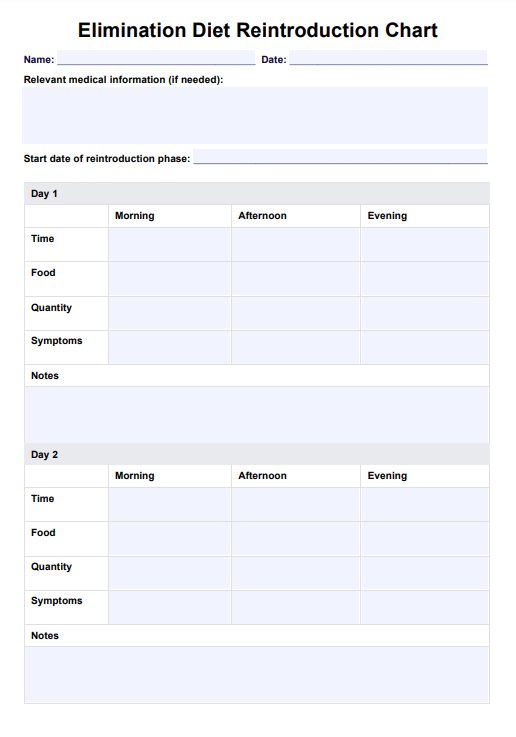Aside from individuals or patients completing a reintroduction phase, healthcare providers such as registered dieticians or general practitioners caring for patients during their elimination diet may use an Elimination Diet Reintroduction Chart.

Elimination Diet Reintroduction
Follow our Elimination Diet Reintroduction Chart for a comprehensive guide to reintroducing foods effectively and tracking client progress.
Elimination Diet Reintroduction Template
Commonly asked questions
These are used during the reintroduction phase of an elimination diet as a resource to help individuals document their progress and any symptoms or reactions to specific food groups and items.
These are used to document any symptoms related to a specific food group or item during the 72-hour introduction of the food item during the reintroduction phase. This allows individuals and healthcare providers to keep track of foods that individuals may be intolerant, allergic to, or sensitive to.
EHR and practice management software
Get started for free
*No credit card required
Free
$0/usd
Unlimited clients
Telehealth
1GB of storage
Client portal text
Automated billing and online payments











